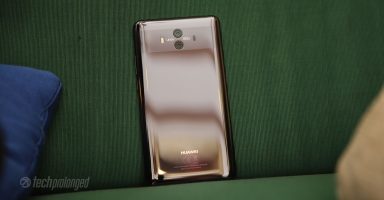Display
Display
The bezel-less phenomenon is now as into era as only a year old smartphone will give you some bulky feel. Those two bezels specially on top and bottom will now be the hurting elements of a smartphone. When it’s a flagship phone costing you some heavy load on your pocket will probably abuse the manufacturer.
After Xiaomi, LG, Samsung and Apple, even Vivo the had launched its mid-ranger with thin bezels. All of them have their own naming to refer to their bezel-less screens. Let’s cut it short, Huawei didn’t take the risk and joined the narrow-bezel league and calls it the FullView display.
Its nearly bezel-less screen makes the overall design a bit smaller than its predecessor with the same display size of 5.9-inch. The display panel is still IPS on the standard Mate 10, unlike the AMOLED used in Pro model. It’s worth mentioning here when we saw them both side by side, they hardly gave any different feel. However we didn’t test them in extreme situations where an AMOLED display sure would beat the IPS easily.
When talking about Mate 10’s IPS display alone it’s good both indoors and outdoors under direct sunlight. In fact the blacks were deeper than most IPS panels, while the maximum brightness on whites could boost up to over 1000 lux. The 16:9 FullView display of Mate 10 features HDR10.
With deep blacks, the contrast ratio is also impressive. Auto brightness works fine but the best thing about it is that you can handle the warmness just according to your need. Eye comfort is really good for me as the pure white doesn’t impress me. It lets you move from cooler to warmer temperature in continuous slider. When Eye comfort is not in use, there is the Color temperature controller which allows you to move around the color palette to introduce some color variations from cooler to warmer color range.





